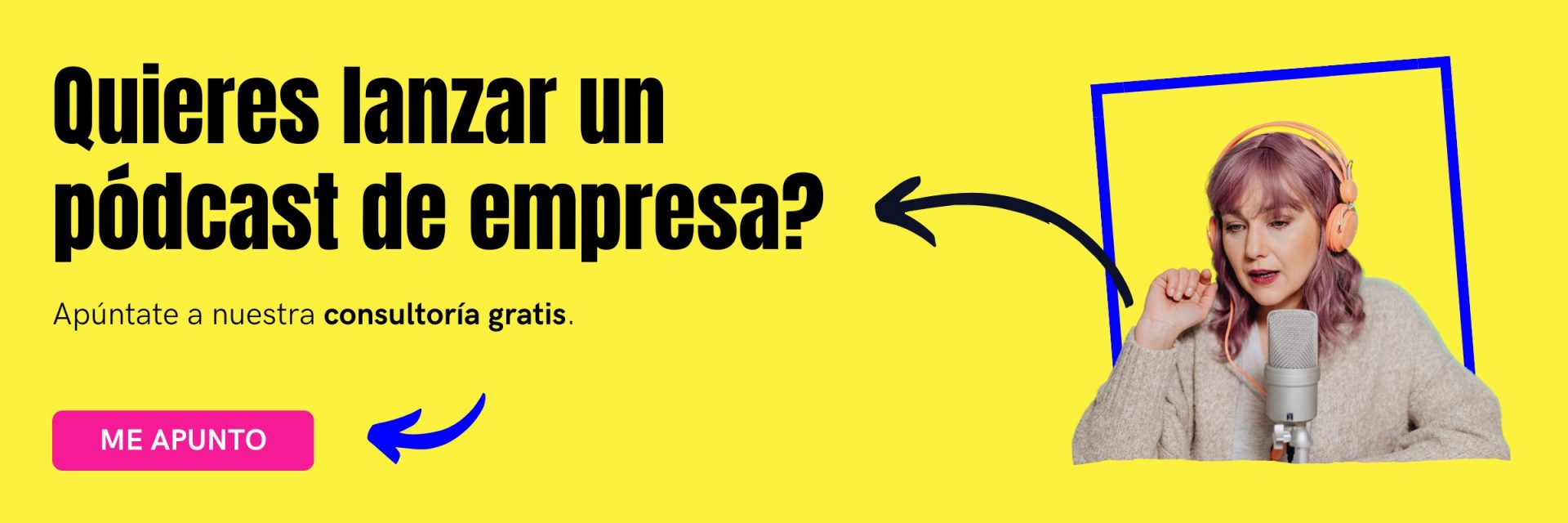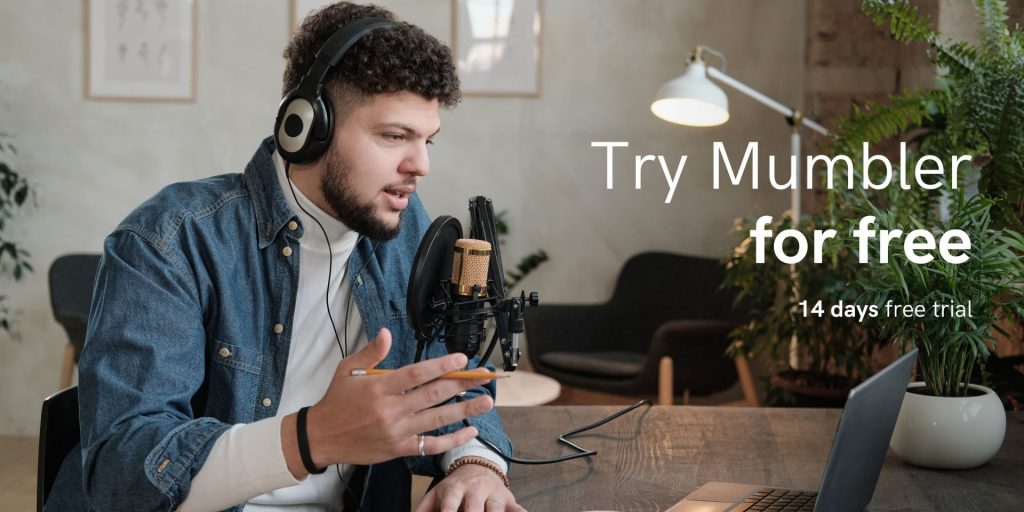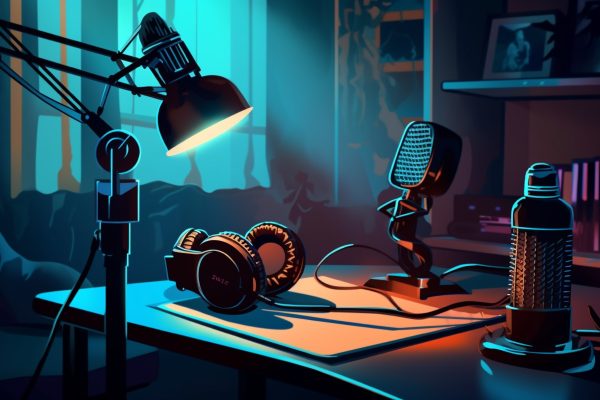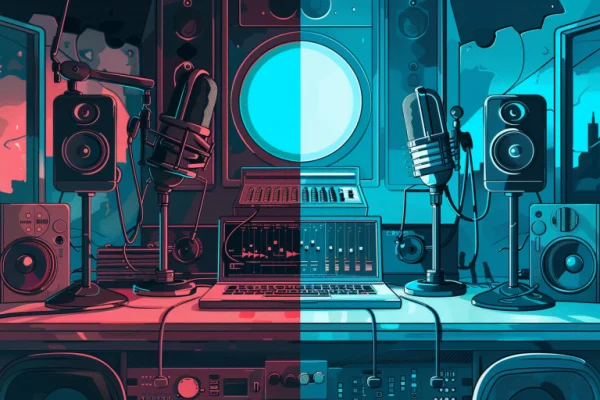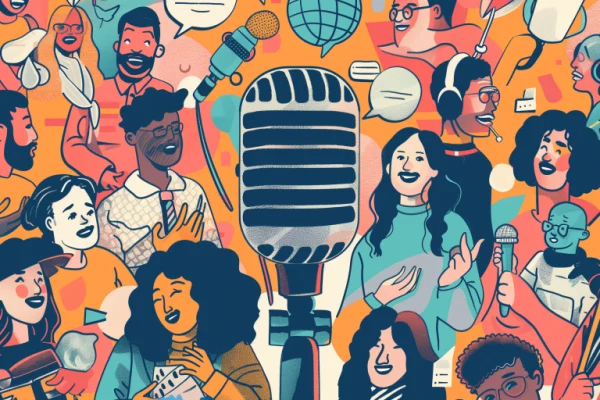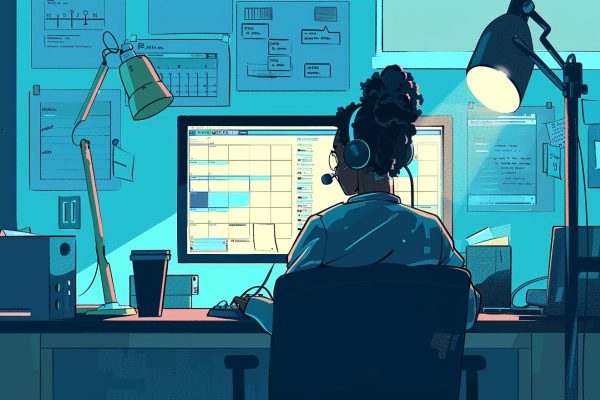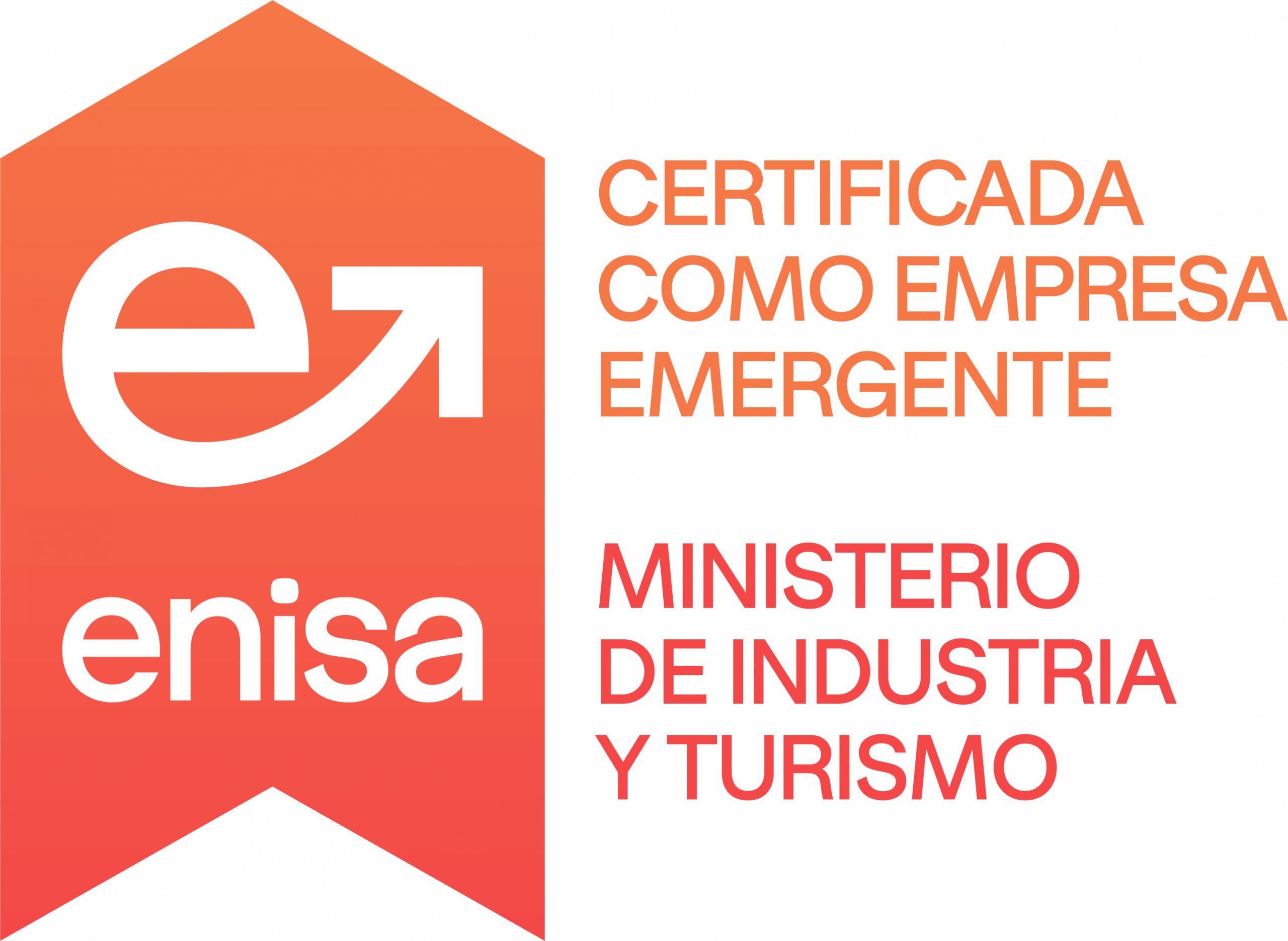If you want to start a podcast, you probably have dozens of questions swirling around in your head.
It's normal.
We've all been there.
Don't worry. Creating your podcast isn't as complicated as it may seem at first glance. It has its nuances like anything else, but it's not complex.
In this article, we'll tell you how to start a podcast: we've gathered the key points you should consider before launching your podcast and also during its release.
It's everything we've learned after launching 4 podcasts of our own to the market: En.Digital, Planeta M, Tribucasters, and Bootstrapping a SaaS.
So, you'll save the time it took us to reach these conclusions. You'll make a time leap as a podcaster. Are you ready?
Let's go.
Who Are You Targeting?
When I launched my first podcast, Planeta M, I never asked myself these two questions:
- Who is my podcast going to target?
- Who will be my listener?
And I'm not alone. Most podcasters with podcasts on Apple Podcasts or any other podcatcher have never asked themselves these questions.
Don't fall into the same trap. Knowing who you want to reach is essential for designing your podcast.
It's also important to ask yourself if the audience you want to target is large enough. If it's a very small group, you'll find it difficult to get listeners.
But beware, it also needs to be specific. If it's not specific enough, you'll struggle to create content that's relevant to the audience.
The ideal scenario is to have a sufficiently large but not too large audience. I know, it's not very specific, but it's all I can tell you.
For reference, here are the audiences we target with our podcasts:
- Planeta M is aimed at marketing professionals who want to have a comprehensive view of digital marketing and stay up-to-date on new trends.
- En.Digital En.Digital is aimed at entrepreneurs who have created startups/companies that are in a growth phase, and also decision-makers in medium/large companies that are in the process of digitalization.
- Tribucasters is aimed at podcasters who want to improve or grow their podcast and stay up-to-date on the podcasting world.
Each definition includes a clear audience, and it's also an explicit renunciation of other audiences.
For example, in En.Digital, we renounce the entrepreneurial audience that is in the process of starting their first project. To include that audience, we would have to generate more explanatory content about basic concepts when starting a business. That would distance us from our ideal audience (seasoned entrepreneurs) for whom very basic content doesn't add value.
If your definition of the target audience doesn't exclude anyone, you'll probably need to rethink it to refine it further because it will be too general.

2. Podcast Topic
The first aspect to consider when deciding on a specific topic is to ensure that it will be interesting to the people you have chosen as your target audience. Your future listeners.
If it's a topic that interests you but doesn't interest the people you want to reach, you'll have a significant problem from the start.
I know, it's obvious, but it wouldn't be the first or second time that a podcast chooses the wrong topic.
There are 3 aspects that can help you define the topic. Let's see them.
Differentiation
When choosing the topic of your podcast, differentiation is an increasingly important factor. The reason is simple: the number of podcasts continues to grow incessantly.
If you don't differentiate yourself, you're the same as everyone else. If you're the same as everyone else, nobody will listen to you or pay the slightest attention to you.
When looking for differentiation, there are two possible situations:
- There are few podcasts on the topic: in this case, you can choose a generic theme (create a generic podcast). For example, a podcast about digital marketing.
- There are several podcasts that talk about the topic: in this case, you can seek differentiation in 5 different ways:
- Differentiation by specialization: within marketing, you can talk, for example, about SEO as Álex Serrano does with "SEO desde Cero,"addressing a specific discipline of marketing. Or you can specialize even more by talking about local SEO like Laura Alfonso does in Negocios Locales.
- Differentiation by vertical: within the marketing sector, you could create a podcast about marketing for pharmacies, like Belén García Lyndon does with "Farmacéuticos Digitales."
- Differentiation by format: you can differentiate your podcast by its format. It's not the same to have a solo marketing podcast as it is to have a two-person mastermind or a four-person discussion like "Planeta M." The result is totally different.
- Differentiation by personality: some podcasts have a very strong personality thanks to their presenters, achieving a differential approach. It's not the same to have a podcast where a topic is approached in a serious manner as it is to have a podcast where the same topic and format are infused with humor, or a more critical approach that seeks debate.
- Mixing the different variables: by combining the different variables we mentioned, very interesting things emerge. You can have a podcast about local SEO for restaurants (combining specialization and focus), a cheeky discussion about e-commerce, or a narrative-documentary podcast about the world of streamers. As you can see, you have many tools to differentiate yourself.
Your Potentialities
There's another key point when choosing the topic for your podcast: your potentialities. What makes you different from other podcasters and can give a special touch to your podcast.
To identify your best potentialities, you can conduct a SWOT analysis.
This analysis can also be very useful for finding ways to differentiate yourself from podcasts already in the market.
We've used the SWOT analysis to focus and refocus our podcasts. For example, Planeta M started as a discussion on Digital Marketing because I was aware of my aversion to the "blank page" and saw a potential weakness in terms of potential lack of consistency in the medium term.
With that in mind, I proposed a discussion format where I was accompanied. Additionally, one of my strengths is organization, so coordinating a large group of people for the discussions fit well with my personality.
In the case of En.Digital, it emerged in interview format because one of Corti's strengths was that he already knew many people in the digital sector thanks to organizing many events in the past.
For him, transitioning to a podcast in interview format was a natural step from organizing physical monthly events where he conducted live interviews or roundtable discussions with industry professionals.
Recently, Corti identified both a threat and an opportunity for En.Digital. Since its inception, several podcasts for growing startups had emerged, so the differentiation was decreasing. But the company Corti works for focuses on Growth. So, En.Digital was refocused to be a podcast about Growth, where high-growth companies are interviewed. This way, he achieved greater differentiation and alignment with the podcast's objectives.
The Pivot Option
Finally, when choosing the theme of your podcast, it can be very useful to leave some doors open..
We all know that things change and the interests of your audience , and even your own, can change.
For this reason, it's advisable that the podcast theme is open enough so that you can pivot or expand the theme without having to close the podcast.
If these two conditions are also met, even better:
- It's a theme that allows you to expand the content and create hundreds of episodes.
- It's a theme that evolves and expands over time.
Two conditions that will help you maintain the podcast over time.
3. What is the Podcast's Objective
Producing a podcast for fun with your friends is not the same as producing a podcast aimed at growing your personal brand or selling your services.
The objective you set for your podcast will determine the tone, style, theme, target audience, and all the other aspects we're discussing in this article.
So, keep this in mind from the beginning. Many podcasts are not aligned with the podcaster's real objective, and the consequence of this misalignment often leads to the abandonment of the podcast.
4. Choosing the Format
We've already briefly discussed the format in the section on differentiation and choosing the theme. But let's get a bit more specific.
The format may be the least importantof what we've discussed so far because it's something that can be easily pivoted. You can start by doing interview podcasts and then change the format to produce a documentary-style podcast, for example.
There are even many podcasts that mix formats: they have episodes in one format and other episodes in another format, or even podcasts that blend several formats in the same episode.
Types of Formats
Although they're not all listed here because there are many possible formats, these are the most common ones:
- Interview: Different approaches: long and deep, more existentialist like Alex Fidalgo's, more "classic" ones that are the usual, or even quick question-and-answer sessions.
- Discussion: Variable like Planeta M or fixed like in Todopoderosos.
- Alone: : Alone in front of the microphone.
- Mastermind: : Usually with two people.
- Dramatización: With actors, music, effects...
- Fiction: With actors, music, effects...
- Journalistic: With documentaries or special episodes on a certain topic.
- ….
Information / Entertainment
Within the process of choosing the format for your podcast, you should also consider the information / entertainment.
In other words, you can create a podcast that is:
- Solely informative/educational.
- Informational with entertainment.
- Solely for entertainment.
Other Considerations
The resources needed to produce each type of format vary greatly. Will you always be able to have someone to rely on? Do you have contacts or are you good at making contacts to interview people? Are you good at storytelling...?
And finally, there's the personal factor. How do you prefer to learn: do you prefer doing research? Do you prefer speaking and listening...?
Answering these questions can help you better define the format of your podcast.
5. Choosing the Name
When choosing the name (the brand) of your podcast, there are several considerations to keep in mind:
- Are there other podcasts with the same name? It's starting to become difficult to find names for your podcast that don't already exist. But it's worth putting effort into finding something original. If you repeat, you could be generating reputation and traffic for another podcast.
- Does the name pass the phone test? If you tell it to someone over the phone, will they understand it the first time?
- Is it different enough? In addition to being original, it should ensure that it doesn't resemble any other too closely.
- Is it an open name that allows you to pivot if necessary? If the podcast is called "How to Win Customers for Your E-commerce," it will be difficult to talk about anything other than this specifically. It would be much better to name it "Grow Your E-commerce," for example. Here you have the option to pivot towards the topic that interests you most at any given time.
- What will its visual appearance be in the podcatchers? Ensure that it grabs attention and provides the necessary information to generate clicks.
It can be very useful to take a stroll through the podcast category where your podcast will be to see if the name you have chosen can stand out and make sure there is no other similar one.
6. Design
Podcatchers (apps for listening to podcasts) are filled with podcast covers that lack any appeal. Zero. Podcast covers that are detrimental to the podcast itself in many cases.
Ensure that this doesn't happen to you.
To do this, you must have a professional image: you can design it yourself with programs like Canva or seek out a professional to handle it. Just as we pay a designer to create a logo for us, why not do the same to design the brand of your podcast? There are already specialized professionals who create true works of art.
What You Need to Design for Your Podcast
To launch your podcast, you'll need to design several things:
- A cover for the podcast: According to Apple Podcast guidelines, if you want to appear in their highlights and rankings, you should upload a cover of 2,000 x 2,000 px..
- A cover template that you can use to design the cover for each episode. The size should be the same as for the main cover.
- An avatar or logo to use on social media profiles.
About the Covers
When designing your covers, it's advisable to:
- Use different covers for each episode. Most podcast listening apps display episode covers. It's an opportunity to stand out from podcasts with generic covers, which you shouldn't miss.
- Look at covers from other podcasts in the same category for inspiration and to see how to differentiate yourself in terms of image, colors, typography, etc.
7. Having a Blog/Website/Landing Page:
On the internet, it's essential to have a home where you comunidad: can direct your community: a website/landing page/blog with a URL to aggregate your content and serve as a reference point.
There are several options to achieve this:
- Set up a website with WordPress.com.
- Use a service like Notion or Carrd to create your website with a template.
- Use Anchor.fm or a similar public podcast hosting service that usually allows you to have a mini-landing page.
- If your podcast is private, it's best to upload your podcasts to Mumbler, where we'll create a landing page for you.
Note: In Mumbler, you can customize the URL of your landing page to make it easy to find.
8. Buying/Choosing a Tune and Designing the Sound Universe
Podcasts are audio. Quite an obvious statement, you might think...
Indeed, you're absolutely right. It's obvious, but it's equally true that many podcasters overlook the potential of audio.
Audio is an open world that allows you to be creative, surprise your listeners, and let their minds soar.
To achieve this, it's crucial to dedicate efforts and time to define how your podcast will sound. It's not just about choosing a cool tune.
Theme Tune
It's the cornerstone of your sound universe. It has to match the tone of your podcast and what you want to convey to your audience.
You have several options for your theme tune:
- Compose it yourself: if you have the skills to do so, it's ideal. Something created by you can never be claimed by others.
- Commission it from a musician: it's a good option but perhaps the most expensive. Use libraries like Epidemic Sound.
- Tirar de librerías como Epidemic Sound.
- Purchase the tune from a platform like Audio Jungle, for example.
Sound universe
The sound universe is the world of sound in which your podcast lives. When designing your sound universe, you should ask yourself several questions:
- Will there be music other than the theme tune?
- Will there be a musical background under the voices?
- Will there be sound effects?
- How will the voices be sound-engineered?
- Will the intro and outro tunes be the same?
- Will there be interludes?
- Will there be music for different sections?
- …
Music and Effects with Rights
This is a very important point and sometimes little-known by beginner podcasters.
In your podcast, you can't use effects or music for which you don't have rights. If you do, you risk having your podcast taken down, rightfully so.
To obtain effects and music with rights, you can use:
- Sound and music libraries like Epidemic Sound or the YouTube Audio Library..
- Platforms where you can obtain royalty-free effects such as Freesound.
We are creators, so we should be the first to defend the rights of all authors.
9. Choosing Hosting
Hosting is the place where you store your audio files securely. Just as there are hostings for websites, there are hostings to host and serve your podcast.
When choosing a hosting, you should consider several important aspects:
- Check if there are any limitations on the number of downloads or the audio quality, especially if the hosting is free.
- Check the functionalities it offers and compare them with other hostings on the market.
- Above all, keep in mind that if you use a free hosting, you have no rights.
For these reasons, we always prefer to recommend a paid hosting such as Mumbler A easy-to-use podcast hosting that provides you with great functionalities to grow your podcast.
10. Prepare a Typical Outline
As I've mentioned more than once, one of the most important things in the world of podcasting is consistency and the ability to generate content periodically and regularly, regardless of the frequency.
To achieve this goal, it's necessary to systematize and simplify production processes. One thing you can do to achieve this is to create a typical outline for your episodes.
It's a text document where you have the intro and outro scripts, the usual questions (if it's an interview format podcast), the segments, the calls to action, space for advertisements, and more.
The typical outline serves as a starting point for preparing your episodes and will save you a lot of pre-production time.
Other Considerations
In addition to what we've already discussed, it's beneficial to consider the following aspects:
- The typical outline should always be dynamic. Being a starting point doesn't mean it's untouchable.
- Be careful about always following the same timing in the introduction and advertisement slots. Your listeners will get used to skipping the first few minutes, resulting in fewer impacts.
- Alternate more "advertising" messages with spaces where you provide value.
- Evolve the outline by looking at the "in-episode" analytics provided by your hosting.
- Surprise your audience occasionally. The human brain likes structure, but it also benefits from occasional surprises.
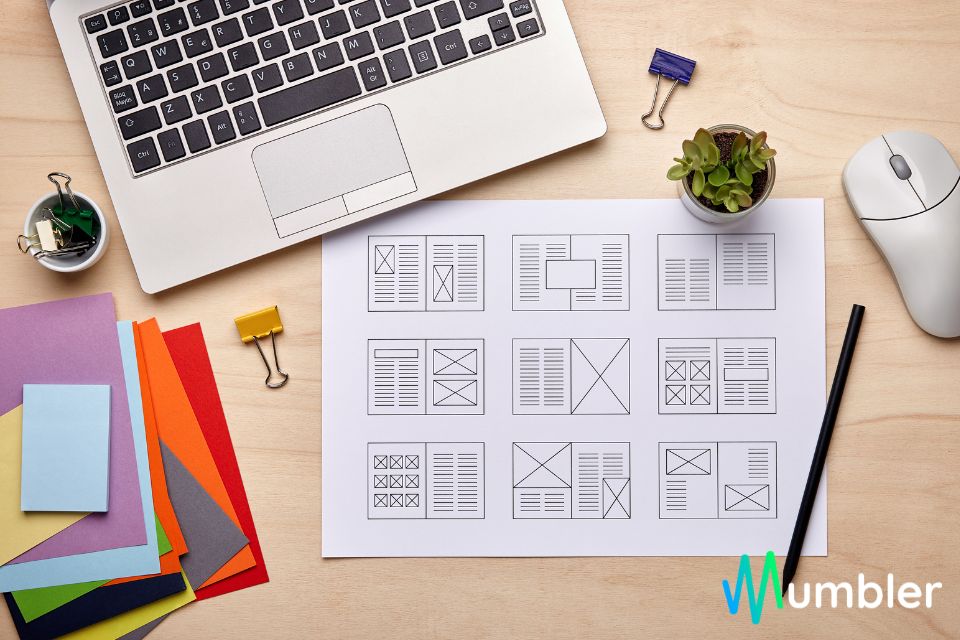
11. Prepare an Editorial Calendar
You've probably heard hundreds of times (especially from bloggers) that you should work with an editorial calendar.
They're absolutely right. The world of blogging has years of experience ahead of us and they know what they're talking about.
Here's why an editorial calendar is useful:
- Frees up space in your brain. It's better to have the topics you want to discuss in an editorial calendar where you can specify the date, guests, whatever you need… than to have it all in your head.
- Allows you to make more strategic decisions: with an editorial calendar, you can strategically define what you want to talk about. You won't be improvising every week, and this will give you more peace of mind and help increase the quality and alignment of your podcast with the audience.
- If you can have a calendar ready from the start, you can plan your first episodes in advance.
What an Editorial Calendar Looks Like
An editorial calendar is a document that allows you to structure the forecast of your podcast's content.
We use Google Sheets (Excel) documents that allow us to have columns for: episode number, topic, guests, recording date, publication date…
So at a glance, you have all the information available. It feels really good to take all this information out of your mind and put it into a document. Give it a try.
How much lead time is needed to work
To achieve the consistency, regularity, and quality in content that we all desire for our podcasts, it's best to have episodes prepared with some time and have a certain "buffer" or backlog.
You must consider that if you need other people to generate content, for example, you conduct interviews or discussions, it will take time to coordinate schedules. So it's crucial to work ahead of time. In Planeta M, we plan episodes 5 months in advance, for example.
Corti in En.Digital always works with 1 or 2 months in advance to have 3-4 episodes as a buffer.
12. Have the Equipment Ready
This is one of the points that concerns us most when we start producing podcasts, but let me tell you now that it's not the most important.
Furthermore, it's a point where many podcasters get stuck for fear of not producing with the expected quality.
But you don't need to have everything to start producing. The audio quality is also something that can improve and evolve.
In my case, I launched Planeta M recording with iPhone headphones. Soon, I realized I needed a microphone and bought one.
Still, let's talk about the desirable technical equipment: equipo técnico deseable:
- USB Microphone: Dynamic USB microphones like the Audio-Technica ATR2500 or Samsung Q2U are excellent options. They provide huge sound quality if you're in a space with minimal echo.
- Headphones: : There are many options available in terms of quality and price. You can start with your mobile phone headphones and later invest in something better. Semi-professional headphones start from around €30.
- Computer: It should have USB or USB-C connectivity and be able to serve as a hub (a point where you can connect everything you need: the microphone, headphones, etc.).
- Recording Software: There are many options available, from Audacity to GarageBand, Quicktime, or Zencastr if you're recording online.
- Editing Software: Examples include Audacity, GarageBand, or Hindenburg.
Now, this is what's desirable. Many podcasters start by recording high-quality podcasts with just their computer and iPhone headphones. The equipment is an "add-on," never something that should stop you.
You may find the absence of a recorder as recording hardware on the list. The truth is, I've been podcasting for 4 years and have never used one. It's clear that the sound quality of a Rodecaster PRO makes a difference. But there are many things about your podcast that should concern you before thinking about such professional gear.
Where to Record
This is a point that very few podcasters take into account. When recording podcasts , you must avoid sound bounce (echo) at all costs. It's our enemy.
With a €50 microphone, you can sound just like on the radio if you're in a place where there's no echo. On the other hand, an empty room can turn a €300 microphone into a real pain.
At my home, I record podcasts inside the closet of my room. Yes, you heard it right, I record my episodes inside a wardrobe with a €50 microphone, and I am extremely happy with the result.
13. Producing a Pilot Episode
Real problems don't surface until you start producing the first episode. Everything may be perfectly planned and designed in your head, but you won't realize the things you forgot or your mistakes until you get to work.
For this reason, it's interesting to create a pilot episode as soon as possible. Or several, depending on the demand and quality you want to achieve.
Why a Pilot is Useful
The pilot episode can be the podcast trailer itself where you briefly explain what your podcast will be about or it can be Episode 0.
Producing a pilot episode is very useful for validating that you have everything under control, but also for distributing the podcast on different platforms.
In the next point, you'll see why.
14. Publishing the Pilot for Distribution
As soon as you have the pilot episode or trailer ready, it's highly recommended to start distributing the podcast.
This means uploading your audio to the hosting platform you've chosen and:
- Waiting for the audio to be automatically distributed to different podcasting apps if your hosting has this functionality.
- Doing manual distribution: providing each platform with your podcast's RSS feed.
La segunda opción es más laboriosa porque tienes que pasarte por Ivoox, Apple Podcast, … e indicar tu feed. Si optas por el envío manual, aquí tienes las URLs desde las que tendrás que enviar tu podcast:
In the first case, keep in mind that distribution may take a few days or even weeks. So, the pilot/trailer can be useful for gradually distributing the podcast while you prepare the first episodes for launch.
15. Produce 3-5 Episodes
Muchos podcasts no superan nunca los 5 episodios. Apple Podcasts y Spotify están llenos de podcasts abandonados a su suerte sin que nadie los mantenga.
Starting with 5 episodes produced from day one makes it easier to overcome this cursed number.
Additionally, it's a strong way to begin. You can publish 2 or 3 episodes right away and have a couple more episodes in reserve to ensure consistency and produce at a comfortable pace.
In the launch section, we'll discuss why it can be useful to release 2 or 3 episodes from day one. Don't miss it 😉
Podcasting is a marathon, not a sprint. The first few months will be tough, and it's highly likely that not even your mother will listen. Not because she doesn't want to, poor woman, but simply because she might not know what a podcast is or how to listen to it.
In this situation, if you can avoid feeling overwhelmed and produce content calmly, it's much easier to endure the necessary months before starting to see the benefits of podcasting.

16. Systematizing Production
Corti often suffers from my obsession with systems. I believe they are the key to continuous improvement and allow us to focus efforts on action rather than improvisation.
Generating content is intense and demanding. That's why it's important to refine production so that it becomes progressively higher in quality with the least investment of time possible.
To achieve this, the following may be useful:
- Use audio templates where you already have intros, cuts, etc. This way, you'll save a lot of time when editing.
- Block time slots in your week for each of the tasks you need to do: pre-production (prepare the script or outline, do research...), production, and post-production (editing, publishing, distribution...).
- You can have a script or outline template that serves as a skeleton for each of the episodes.
Launching the Podcast
Before launching a podcast and making it known to everyone, it's highly recommended to have distribution set up.
Distribution
When we talk about distribution, we mean that your podcast is already available on all podcasting apps: Apple Podcasts, Ivoox, Spotify...
At Tribucasters, we always mention that we launched without being on Apple Podcasts because due to an unspecified error, it took over a month to distribute and reach Apple Podcasts. As you can imagine, this was a problem.
Launch
When launching your podcast, there are several things to consider:
- It's good to launch with more than one episode: this will help you get more initial listens and more subscriptions.
- You have to try to mobilize everyone: invite your friends/family to subscribe, like, leave reviews...
- You can hire an advertising plan on Ivoox to help promote the podcast.
- If you have a product or service, you can organize a giveaway for those who leave reviews of the podcast on Apple Podcasts. Reviews are a powerful ranking factor.
If you have a small existing audience that you've gained through a blog, a YouTube channel, social media... you have a strong card up your sleeve. By activating this audience, you can achieve a good initial listenership that helps you appear in rankings like "New and Noteworthy" on Apple Podcasts.
18. Creating a Newsletter and Social Media Channels
Podcasters, like most content creators, tend to put all their energy and focus on producing content, almost completely forgetting about promotion..
We often forget that even the best episode of all time won't get very far if we don't dedicate time, resources, and effort to promoting it.
That's why having a newsletter and social media profiles is so important. Newsletter
Newsletter
It helps us have better control over the audience and establish a direct communication channel with listeners. Email is still the best marketing channel out there and a way to communicate directly with listeners.
Additionally, it expands the spaces where you can give visibility to sponsors. Having a newsletter will help you get better sponsor
The Substack option is becoming increasingly interesting, both for the ease of managing your own newsletter at zero cost and for the monetization options you have in the future. But you can also use tools like Acumbamail or Mailchimp.
Social Media
When creating profiles on social media, we have to try not to go crazy. We can't be everywhere, so it's much better to have a few profiles but well taken care of.
There are several aspects to consider:
- Each social network is a world of its own: it has its own language and tone.
- We have to be where our listeners are, not on the trendiest network of the moment.
- If you open a profile on a social network, you must keep it active.
- Each profile on a social network should provide some value. What are you going to offer your followers is a key question you should ask yourself.
- A profile on a social network is not just a one-way channel. Social networks are social. They are meant for you to engage in conversation.
Automating the dissemination of new and previous episodes
At the very least, we should dedicate the same amount of time to promoting our podcasts as we do to producing them. But since we know this will never be the case, let's see how we can achieve maximum exposure with minimal effort.
To achieve this, you may find these ideas very useful:
- Schedule tweets using tools like Metricool.
- Use lists of recurring tweets.
- Advertise through Twitter Ads to promote previous episodes.
In our podcasts, 50% of monthly listens come from old episodes. Therefore, it is interesting to re-publish old episodes to extend their long tail of listens.
How to start a podcast: conclusions
After reading this article, your head might be about to explode. There are many things to consider and it can be overwhelming.
But let me reassure you. There is no podcast that has strictly followed all these points. None.Zero.
So take a deep breath and relax. This is the wishlist, but it's impossible to fulfill it 100%. However, the closer you get, the more options you'll have for producing something special and the closer you'll be to your goals.
The most important thing is to start as soon as possible and let the podcast flow. Let it evolve with you and your audience.
So don't spend the next 3 months analyzing everything I've told you today. Go for it as soon as you have it reasonably clear.
If you already know what your podcast will be like, at Mumbler, we provide you with the tool to make money with your podcast. Launching a subscription podcast is easier than ever. Join the movement of independent podcasters.
About the author
Mumbler CEO & Cofounder. Slow content creator: newsletters, podcasts and videos.

